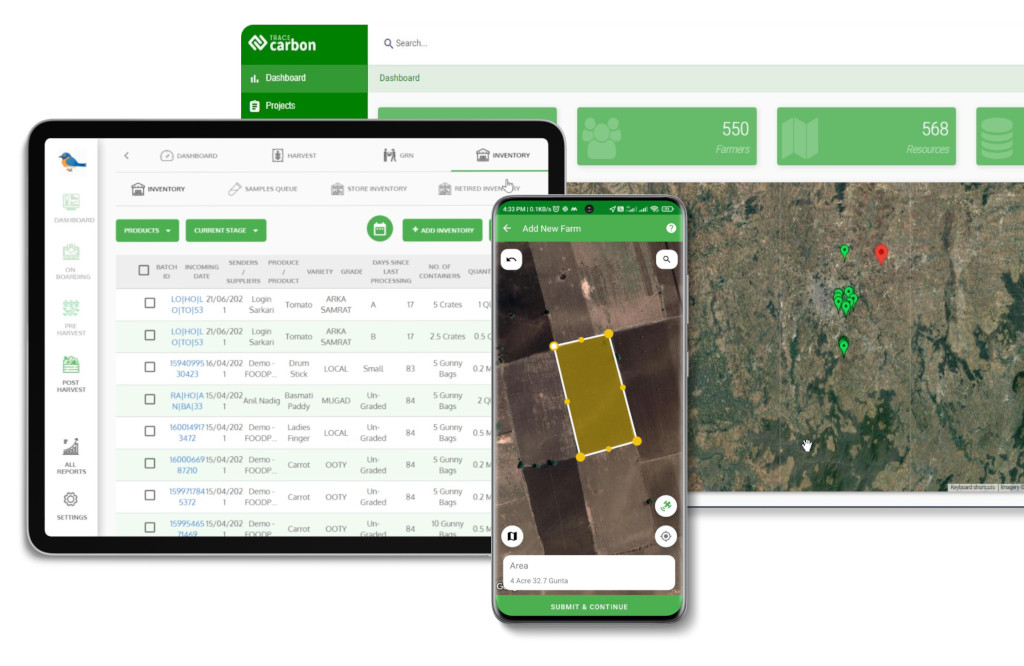Contact: +91 99725 24322 |
Menu
Menu
Quick summary: Struggling with supplier onboarding in inventory management? Learn how automation, AI, and compliance tracking can eliminate delays, ensure accuracy, and optimize your supply chain for efficiency. Read now!

Your inventory is only as strong as your supplier network—so why let inefficient supplier onboarding slow you down. Supplier onboarding is the foundation of an efficient inventory management system. Yet, too many businesses struggle with delays, data inconsistencies, and compliance issues, leading to stock shortages, order fulfilment problems, and supply chain bottlenecks.
According to McKinsey, today’s procurement teams are under pressure to mitigate inflation impacts while managing supply and supplier risks. This has driven a shift from traditional globalisation and supplier consolidation approaches to models prioritising supplier diversification and risk management.
Effective supplier onboarding is critical for maintaining a transparent, compliant, and efficient supply chain. However, businesses dealing with multiple suppliers and decentralized sourcing—especially in agriculture, food, and commodities—face several roadblocks that slow down operations and create inefficiencies. So, what are the biggest roadblocks in supplier onboarding, and how can businesses fix them to ensure faster inventory replenishment and seamless supply chain operations?
Key Takeaways
Your inventory is only as efficient as your supplier network. But if supplier onboarding is slow, messy, or inconsistent, your entire supply chain suffers.
Supplier onboarding isn’t just about adding new vendors to your system—it’s about ensuring they are verified, compliant, and seamlessly integrated into your inventory processes. Yet, many businesses face roadblocks that lead to delays, stockouts, compliance issues, and inefficiencies.
Let’s break down the biggest challenges in supplier onboarding, their impact on inventory management, and practical solutions to fix them.
The Challenge:
Currently, inventory systems lack the ability to handle multiple suppliers for a single batch or product, making tracking supplier-specific quantities difficult.
Why This is a Problem:
A coffee exporter sources 50 metric tons of coffee beans from 5 different smallholder suppliers. Without a multi-supplier onboarding feature, the system treats it as a single entry, making it impossible to track which farmer supplied how much and at what price.
Solution:
The Challenge:
For businesses sourcing directly from smallholder farmers, there is no system to onboard inventory per individual farmer.
Why This is a Problem:
A cocoa trading company sources beans from 100+ smallholder farmers. Some farmers are certified organic, but because the inventory does not recognize individual contributions, the entire batch loses its premium organic status.
Solution:
The Challenge:
Most inventory onboarding screens force users to enter irrelevant data, making the process slow, confusing, and inefficient.
Why This is a Problem:
A rubber processing company needs to onboard 200 smallholder suppliers every harvest season. The onboarding screen requires 20+ fields that are irrelevant, such as “Company Registration Number” (not applicable to individual farmers). This causes delays and frustration, leading to incorrect data entry.
Solution:
The Challenge:
Suppliers often have multiple collection centers, warehouses, or processing units—yet inventory systems fail to let businesses select specific nodes within the supplier network.
Why This is a Problem:
A timber exporter sources from a supplier with three warehouses in different regions. One warehouse is certified under EUDR, but the others aren’t. Since there is no node-level selection, the company accidentally mixes compliant and non-compliant timber, risking fines and shipment rejection.
Solution:
The Challenge:
Suppliers use different software systems, leading to integration failures between their databases and your ERP or inventory management platform.
Why This is a Problem:
A global electronics company faced stock discrepancies due to unlinked supplier systems. After implementing API-based integration, their inventory tracking improved by reducing out-of-stock incidents.
Solution: Implement API-based supplier integration.
If businesses don’t fix these onboarding issues, they risk inefficiencies, compliance violations, and financial losses. Multi-supplier onboarding, farmer traceability, simplified workflows, and node-level tracking aren’t just nice-to-haves—they’re business essentials in industries like:
Efficient inventory creation and onboarding is critical for businesses in agriculture, food, rubber, timber, coffee, and other EUDR-regulated industries. To solve traceability gaps, compliance risks, and onboarding inefficiencies, businesses need an optimized digital system that streamlines supplier selection, farmer traceability, pricing, and documentation.
The Solution:
Example: A coffee distributor sources 100 metric tons of Arabica coffee from 5 different farmers. Instead of creating 5 separate inventory entries, the system automatically assigns individual suppliers to the same product batch, keeping sourcing records intact.
The Solution:
Example: A cocoa wholesaler buys beans from 150 farmers across Ghana. The system tags each farmer’s exact GPS location and contribution in kg, ensuring compliance with EUDR traceability rules while maintaining organic and Fairtrade certifications separately.
The Solution:
Example: A rubber processor receives 30,000 kg of latex from 10 different smallholder suppliers. Instead of manually calculating, the system auto-aggregates the total batch, while keeping individual supplier records intact for audit purposes.
The Solution:
Example: A timber exporter sources logs from local farmers at $50 per cubic meter and large plantations at $45 per cubic meter. The system auto-applies price variations while keeping the batch unified for inventory tracking.
The Solution:
Example: A palm oil refinery submits inventory records digitally, where the system auto-verifies FSC certification, EUDR geolocation requirements, and supplier details before finalizing stock entry.
The Solution:
Example: A coffee distributor buys 10,000 kg of beans from 50 small farmers. Instead of issuing paper receipts, each farmer receives an SMS with their exact supply details, payment breakdown, and QR code-linked transaction record.
The Solution:
Example: A tyre manufacturer uses blockchain to track rubber sourcing. Retailers can scan a QR code on each tyre to see exact supplier locations, EUDR compliance status, and sustainability certifications.

For businesses in agriculture, food, rubber, timber, coffee, and other EUDR-regulated industries, TraceX’s inventory management feature provides an end-to-end digital solution that simplifies multi-supplier onboarding, traceability, and compliance management.
Multi-Supplier & Farmer Mapping
Automated Batch & Quantity Management
Smart Pricing & Rate Calculation
Seamless Compliance & Approval Workflow
Digital Documentation & Traceability

Supplier onboarding is the foundation of an efficient inventory management system. Without a fast, transparent, and compliance-ready onboarding process, businesses risk delays, stock inaccuracies, compliance issues, and supply chain disruptions. By leveraging automation, AI-driven data validation, compliance tracking, and seamless ERP integration, companies can eliminate onboarding bottlenecks, improve supplier relationships, and enhance overall inventory efficiency.
Investing in smart supplier onboarding solutions isn’t just about reducing errors—it’s about creating a future-proof, scalable, and competitive supply chain. Don’t let manual inefficiencies slow down your inventory operations—optimize supplier onboarding today!
The most common challenges include manual onboarding delays, inaccurate supplier data, compliance risks, ERP integration issues, and poor supplier communication.
Companies can use automated onboarding platforms, AI-powered data validation tools, compliance tracking software, and supplier collaboration portals to streamline the process.
Automating supplier onboarding reduces procurement delays, improves data accuracy, enhances compliance, and ensures seamless stock tracking, leading to better inventory efficiency and cost savings.
